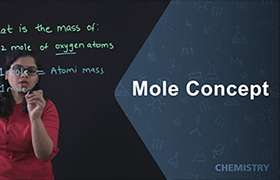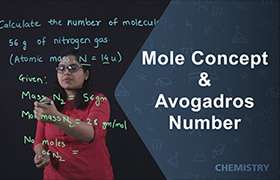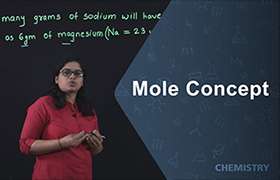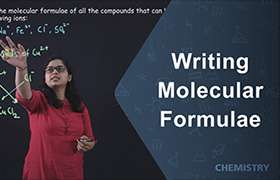CBSE Class 9 Answered
How is the precipitation reaction used to verify law of conservation of mass and why it can't be displacement reaction?
Asked by Ashok Maheshwari | 07 Feb, 2014, 05:37: PM
Aqueous solution of barium chloride reacts with sodium sulphate to form a white precipitate of barium sulphate and an aqueous solution of sodium chloride.
This is an example of a chemical reaction because a precipitate has formed, there is a change in colour, and the products are not easily converted back into its reactants.
During this reaction displacement of ions also occurs. But formation of precipitate shows that there is a chemical reaction happening inside the flask which is one of the important criteria of the experiment.
Answered by | 10 Feb, 2014, 04:28: PM
Application Videos
Concept Videos
CBSE 9 - Chemistry
Asked by rajputanaji290 | 03 Oct, 2023, 09:30: PM
CBSE 9 - Chemistry
Asked by muditsharma287 | 09 Mar, 2023, 10:10: PM
CBSE 9 - Chemistry
Asked by shivalaxmi0205 | 08 Mar, 2023, 07:46: PM
CBSE 9 - Chemistry
Asked by shivalaxmi0205 | 08 Mar, 2023, 07:43: PM
CBSE 9 - Chemistry
Asked by jssjj | 19 Jan, 2023, 07:25: PM
CBSE 9 - Chemistry
Asked by mohammedhaqqani.6b | 14 Jun, 2022, 02:51: PM
CBSE 9 - Chemistry
Asked by gauravsingh36428 | 14 Mar, 2022, 07:44: PM
CBSE 9 - Chemistry
Asked by jiyajthakor | 28 Feb, 2022, 07:03: PM
CBSE 9 - Chemistry
Asked by gillsaabjashanpreetsingh3 | 16 Jan, 2022, 01:23: PM
CBSE 9 - Chemistry
Asked by prachisharma772007 | 16 Jan, 2022, 11:12: AM











